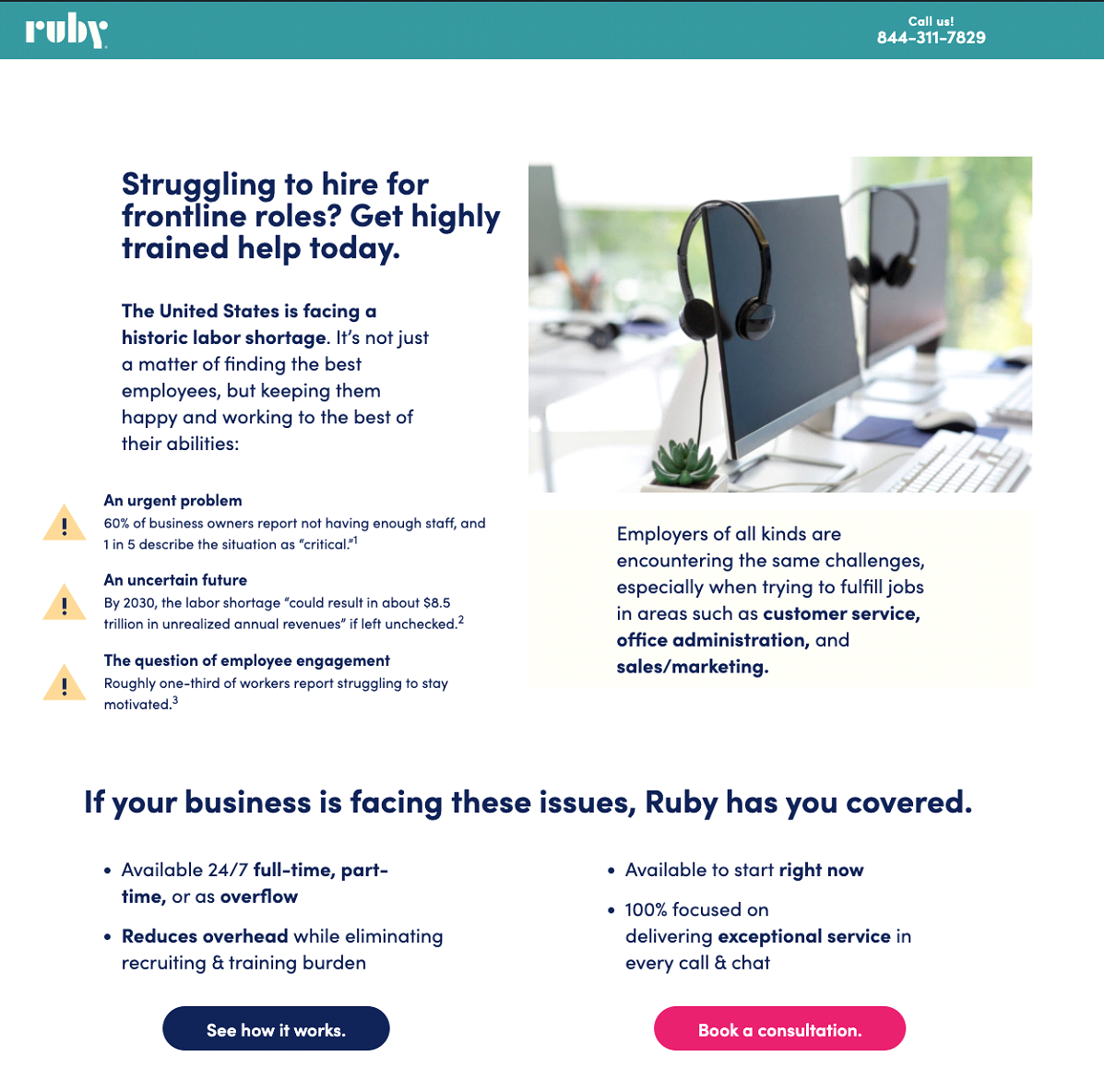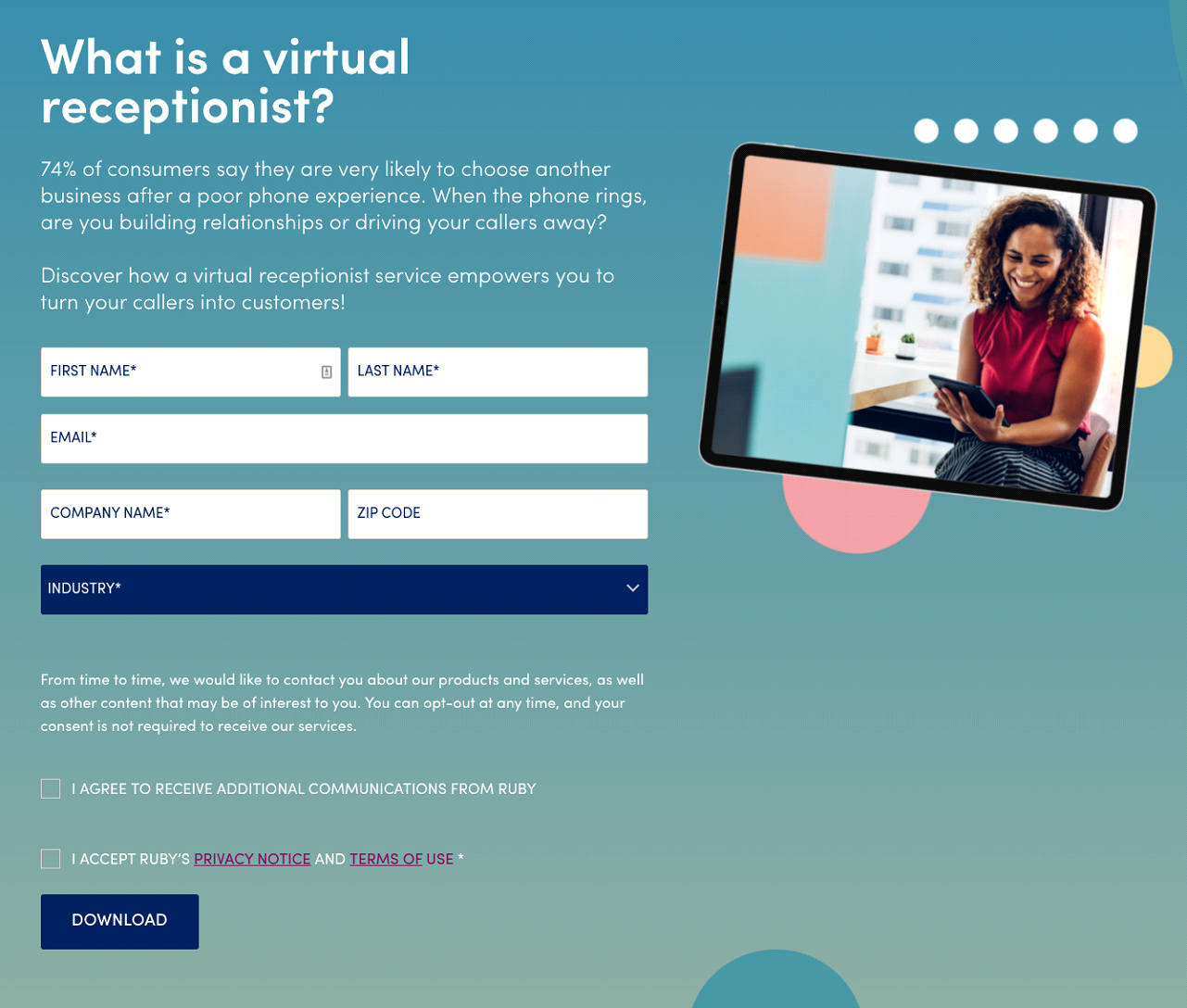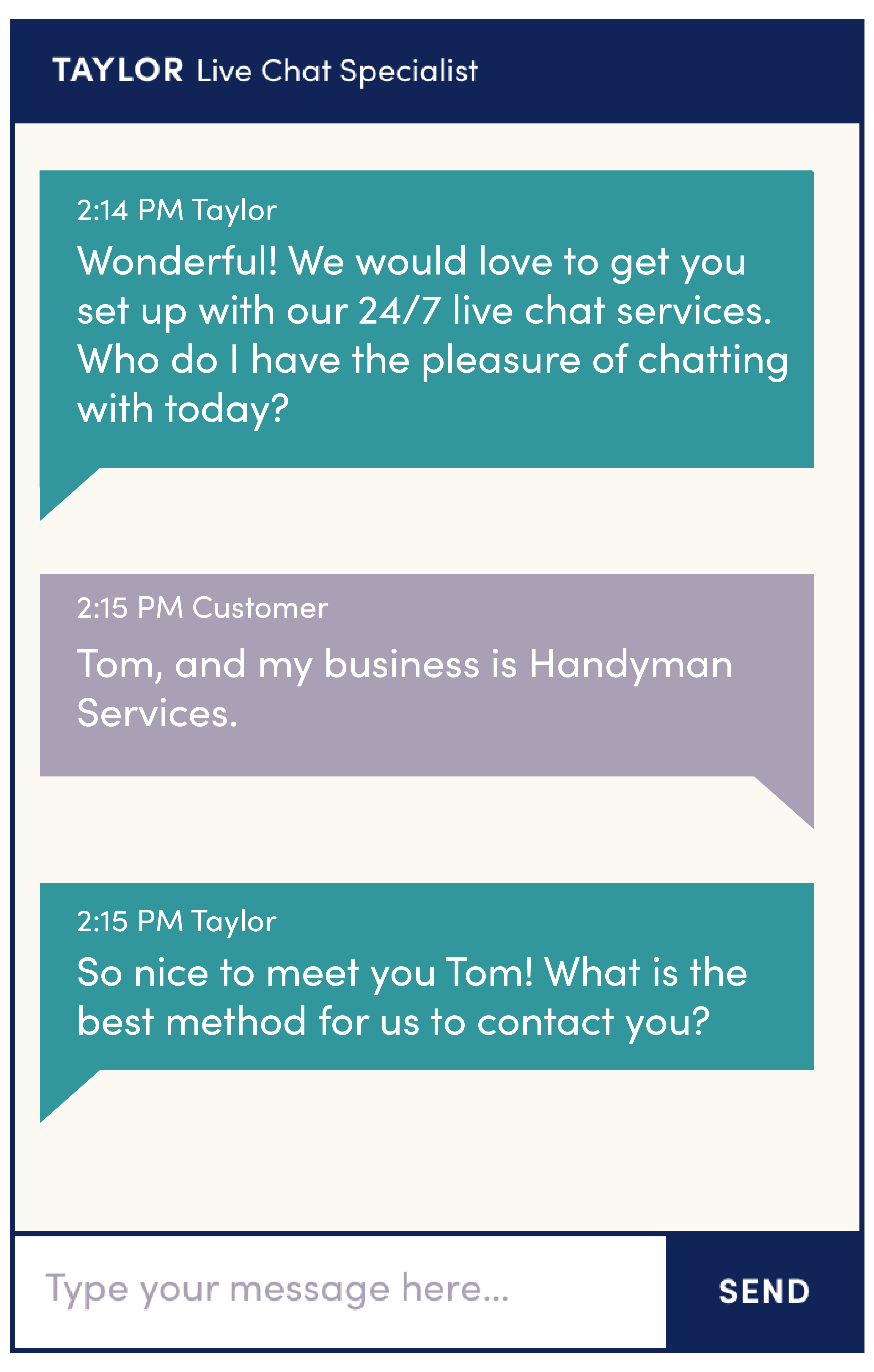In terms of attracting and converting buyers, your website is as important as your business’s physical location.
Actually, it’s more important.
After all, many, many more people can visit your website than your office, lobby, or storefront at any given time. And there’s virtually no limit on the experiences you can create for those visitors. That makes your online presence one of your most powerful tools for lead generation.
To make the most of your site’s lead generation potential, you need to implement the right tools and features, track your performance, and continuously improve your approach. Here are four factors to optimize, with examples taken from our own website:
1. Offers & calls to action
What action do you want people to take when they visit your website? Are there certain deals, services, or capabilities you want them to know about?

Convert visitors into leads by putting the right words, imagery, promotions, and resources in front of them. Effective CTAs entice people to take the next step—whether it’s calling your business, giving you their contact information, downloading content, checking out your products, learning more about your services, or engaging in another activity.
2. Landing pages
The most successful lead generation is often the most specific. It cultivates demand by offering a particular group of people a particular solution to a particular problem they face. For a family law attorney in northeast Texas looking to attract clients, for example, advertising as a “Dallas divorce lawyer” is probably more effective than advertising simply as a “lawyer.”
But creating a targeted ad is step one. Once someone clicks on the ad, where they end up matters. That’s where landing pages come in. Landing pages are specific pages built for users to “land” on after interacting with your ads. They can be designed with specific audiences’ intentions and buyer journeys in mind, so you can maximize your chances of converting the people you want to convert into leads.

3. Forms

Lead generation is about more than drumming up general awareness of your products, services, or brand. It’s about pinpointing and connecting with the individual people who are actively interested in doing business with you. And to do that, you need to obtain their permission, contact information, and any other details that qualify them as a potential buyer.
Forms to the rescue! For many marketers, forms act as the first and most important lever in turning visitors into leads. They start the conversation between a business and a prospective customer or client.
A word of advice: keep your forms short and simple. Make it as easy as possible for your visitors to convert, and you’ll maximize the chances of conversion.
4. Live chat

If your website is the digital equivalent of a physical storefront, live chat is comparable to a friendly representative at the front desk.
Did you know?
- Live chat is 4.6 times more likely than other channels to convert website visitors into customers.
- Approximately 42% of all customers prefer chat over other communication channels.
- Of customers who use chat, 82% report satisfaction with their experiences —the highest level of all customer service channels.
Businesses are increasingly using chat to learn about their website visitors, answer questions and address sales objections, offer help on demand, and more. (For a full rundown on using live chat as a marketing and sales tool, check out my article.)
These are just a few of the factors that determine your website’s capacity to generate leads for your business. Other considerations include page speed, navigation, user experience, mobile responsiveness, video content—the list goes on.
This article is a sample of Ruby’s guide, the lead generation playbook. For more tips on digital marketing—including social media, pay-per-click advertising, content marketing, and more—be sure to check out the full guide.
To learn more about Ruby services and your discount as a Solo Practice University member, please call or click here to Learn more about Ruby.





















Comments are closed automatically 60 days after the post is published.